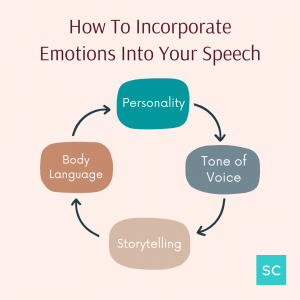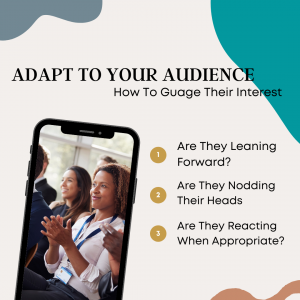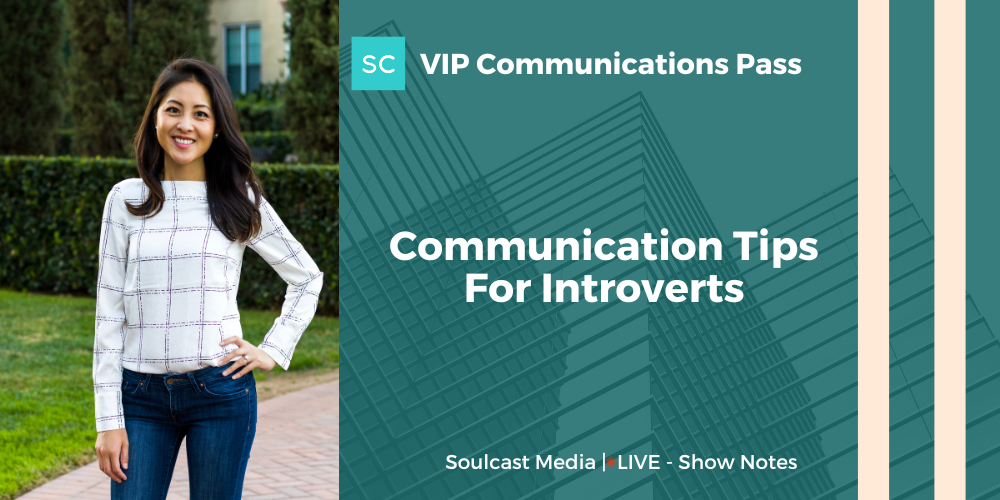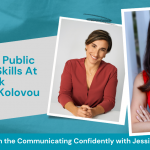Mastering presentations on a video call
Being a strong public speaker is critical for career success. When giving a presentation, you want to ensure what you say is remembered. In a virtual world, it is no different. However, because the environment is now on video, not in person, there are a few nuances to consider to ensure you’re speaking powerfully.
We’ve put together 4 strategies that can help you master presentations on video calls:
1. Use Effective Language
As you prepare for your presentation, it is important you think about the words you use. In a virtual world, our attention span is much shorter. That’s because we don’t have the presence of being in a room to retain an audience’s focus. What words you say can make a difference.
So what does effective language look like?
Specific – Effective language is specific and not vague. A powerful speech uses language that is more concrete. Avoid generalities or ideas that aren’t thought through.
Concise – If you can say it in fewer words – do it! Yes, you may be giving an hour-long presentation, but that doesn’t mean your sentences need to leave you breathless. Speak slowly so you avoid the ums and ahs.
Accurate – Is what you are saying true and accurate? If you aren’t sure about something it is best not to say it. When you give a powerful public speech you don’t want there to be any discrepancies that might come up after the fact. Once your listeners feel a sense of doubt about you on video calls, they will likely turn to do something else.
2. Incorporate Emotions
Sometimes it’s not what you say but how you say it. If you think back to speeches or presentations that gripped you from beginning to end, what was it they all had in common? Most likely there was a powerful emotional tug.
Even the most mundane topic can be exciting when presented with the right emotions.
There are a few ways you can incorporate appropriate emotions into your virtual presentations:
- Bring Your Personality – Your
 personality sets you apart from everyone else. Use this to your advantage! Your personality can help bring certain emotions into your presentation. Don’t think that showing personality will diminish your professionalism. If done right, it can actually draw people into you and what you’re saying.
personality sets you apart from everyone else. Use this to your advantage! Your personality can help bring certain emotions into your presentation. Don’t think that showing personality will diminish your professionalism. If done right, it can actually draw people into you and what you’re saying. - Tone of Voice – Your tone of voice can take your audience on an adventure. By varying your tone, you control the pace and mood of your presentation. Should the audience be excited? Should they be upset? Your tone can help you bring emotions into your speech. Think back to some interesting audio books or podcasts. Chances are varying tone was what kept you engaged (or not!).
- Storytelling – One of the biggest ways you can bring emotions into a virtual presentation is with a really good story. The key is making sure that your story circles back or emphasizes the topic you are speaking about. We recommend starting off your presentation with a short story (less than 5 minutes) because it hooks the listener’s in.
- Body Language – Your hand gestures and posture is a powerful communications tool. As you craft your message, pay attention to where you can use body language to amp up emotion and emphasize a point. In a virtual world where you are giving video presentations, your body language can be an asset to retain and audiences’ attention.
Emotions are key to a powerful speech. Make sure you are using them throughout your video presentation.
3. Adapt To The Audience
Even if you have practiced your speech to the point that you have it memorized, you still will want to pay attention to your audience and adapt. This skill is more difficult to learn as it takes a lot of practice and open-mindedness. However, it isn’t impossible to learn.
 There are a few ways you can adapt to your audience on the spot. In fact, this is important to do if you can sense they are beginning to disengage. In fact, even if only a quarter of participants’ videos are on, use that as a temperature check of others on the call too.
There are a few ways you can adapt to your audience on the spot. In fact, this is important to do if you can sense they are beginning to disengage. In fact, even if only a quarter of participants’ videos are on, use that as a temperature check of others on the call too.
Gauge The Audience and Look For:
- Is your audience leaning forward or sitting relaxed?
- Are they nodding their heads?
- Do they laugh when appropriate?
These are ways to tell if your audience is with you or not. If you notice that they aren’t responding, you will need to quickly adapt your presentation.
Positive Body Language
Positive body language is a type of non-verbal communication that puts you and your audience in a position of comfort or at ease. Positive body language signals that you are open and approachable too. Be sure to adjust if you are noticing people are starting to disengage:
Examples of positive body language include:
- Good eye contact
- Having an open posture
- Hands in a relaxed state
- Good posture
- Smiling
- Head movement as you speak
Get Them To Engage
If you notice your audience is losing interest or not responding, try to prompt them. This can include:
- Posing a rhetorical question
- Asking a question and picking someone out of the audience to answer it.
- Vary your pitch
- Have a startling statistic at the ready
4. Have A Dynamic Ending
How do you end your virtual presentation so it’s memorable and impactful? At this point, you’ve taken your audience on a journey and now it’s time to conclude with a dynamic ending. You will want to end your presentation with a statement that your audience can take with them and will remember. This can include:
Have A Call To Action – When you end your presentation with a call to action, you are giving the audience something they can do. This helps them not only remember your speech but also engage after the fact.
End With A Quote – A really good quote can bring forth all of the emotions you were hoping to evoke. Ending with a quote will give your audience a golden nugget to leave with.
End With A Visual – Just like ending with a quote, ending with a strong visual i.e. picture, animation, etc can drive home your point.
Crafting a powerful virtual presentation takes time and effort. However, implementing these 4 strategies will create a powerful public speech your audience won’t soon forget!
__
Whenever you’re ready, there are 3 ways we can help you:
- Discover your communications style so you know where to start. Over 4,000 people have found theirs here.
- Attend our monthly communication workshop to build communications confidence (new topics: public speaking, advocating for yourself, building credibility, etc) here.
- Get your brand in front of 43k+ people by sponsoring our newsletter or Soulcast Media | LIVE LinkedIn events [contact: hello@soulcastmedia.com]











